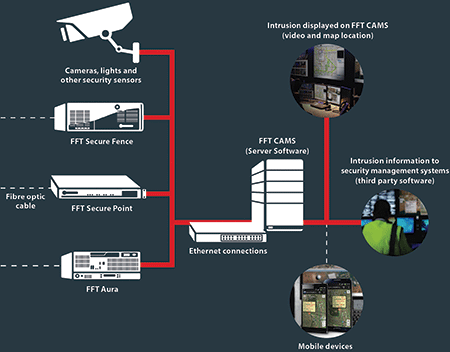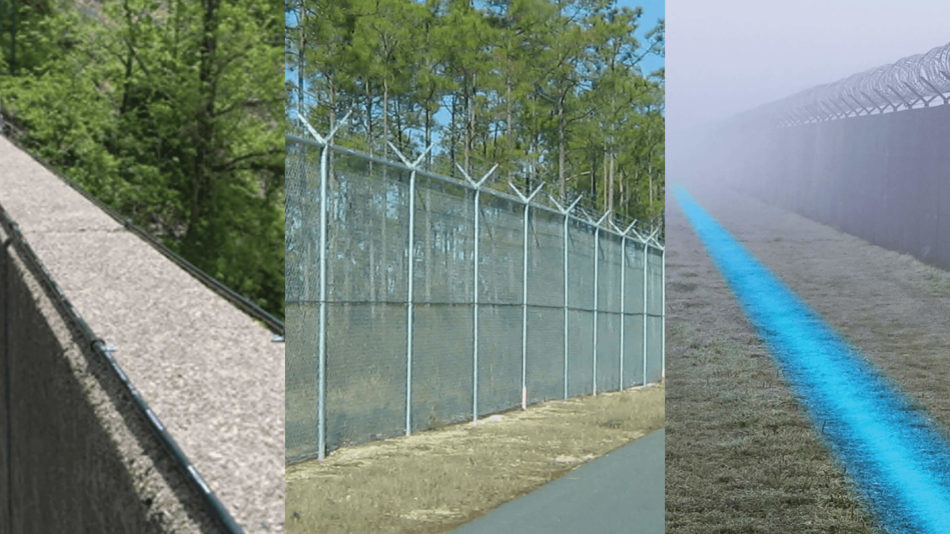Secure Your Home With Dependable Fiber Optic Security Solutions
In a period where safety dangers are increasingly sophisticated, the need for efficient protection services is vital. Fiber optic security systems stand out by using phenomenal reliability and performance, leveraging advanced light transmission technology to improve monitoring capacities. These systems not just offer resistance to electro-magnetic interference yet likewise promise long-term price performance via lowered upkeep requirements. However, the choice to purchase such a solution involves careful consideration of different variables. Understanding the details of fiber optic protection can illuminate the course to securing your building better. What facets should be checked out to maximize your investment?
Benefits of Fiber Optic Security
Fiber optic security remedies provide a variety of advantages that make them progressively necessary in today's digital landscape. Among one of the most significant benefits is their superior bandwidth capability, which permits the transmission of large amounts of data over lengthy ranges without significant signal deterioration. This capacity is particularly beneficial for safety systems that rely on high-def video clip surveillance and real-time surveillance.
Additionally, fiber optic cables are inherently a lot more protected than conventional copper wiring. They are immune to electromagnetic disturbance, making them much less vulnerable to hacking or eavesdropping. This improved protection is crucial for protecting delicate data and keeping the integrity of security systems.
Additionally, optical fiber are much more resilient and resistant to ecological factors, such as wetness and temperature changes, guaranteeing long-term dependability and reduced upkeep costs. The light-weight nature of fiber optic cords likewise streamlines installation procedures, permitting greater versatility in system style.
Just How Fiber Optic Equipment Work
In modern-day safety and security applications, the operation of fiber optic systems depends on the principles of light transmission through adaptable glass or plastic fibers. These fibers are made to carry light signals over fars away with marginal loss, making them suitable for transferring information associated with protection tracking. The core of the fiber, bordered by a cladding product, makes sure that light signals stay contained within the core through a sensation referred to as total internal representation.
When integrated right into safety systems, fiber optic cable televisions can send data from numerous sensors, such as cameras, activity detectors, and alarms, to a main tracking station. The high data transfer capability of fiber optics enables for the transmission of huge quantities of data simultaneously, making it possible for real-time surveillance and punctual reaction to possible hazards.

Sorts Of Fiber Optic Safety Solutions
Numerous sorts of fiber optic security options have arised to improve surveillance and protection throughout various atmospheres. One noticeable option is fiber optic border intrusion detection systems (PIDS), made to check and protect home borders through the detection of vibrations and disturbances along fiber optic cable televisions. These systems offer real-time notifies, making it possible for timely reactions to unapproved accessibility attempts.
An additional reliable remedy is fiber optic video clip surveillance. This innovation leverages high-definition video cameras linked using fiber optic wires to transmit video clip information over cross countries without significant loss of high quality. This arrangement is specifically advantageous in expansive areas, such as airport terminals and commercial websites, where traditional copper cables might falter.
In addition, fiber optic sensing units are increasingly used for ecological surveillance, identifying adjustments in temperature level, pressure, or acoustic signals that might suggest protection breaches or hazardous problems. These sensors use high level of sensitivity and accuracy, making them ideal for critical infrastructure security.

Installment and Upkeep Tips
Effective setup and maintenance of fiber optic security remedies are crucial for ensuring their optimum performance and durability. Fiber optic cords should be directed securely, preventing sharp bends or spins that could endanger their stability.
Throughout installation, it is recommended to carry out comprehensive screening of the system to validate that all parts are working properly. Normal maintenance checks need to be scheduled to inspect the fiber optic cords for any type of signs of wear or damages, as well as to ensure that links stay protected. Cleansing the adapters regularly is additionally vital to prevent signal loss as a result of dirt or debris.
Additionally, keeping an updated inventory of installed elements and their specs can facilitate simpler troubleshooting and upgrades. By sticking to these installation and upkeep pointers, homeowner can optimize the effectiveness of their fiber optic safety and security remedies, making sure a trustworthy defense against possible hazards.
Comparing Expenses and Performance
When examining fiber optic security services, comprehending the balance in between prices and performance try here comes to be vital (security fibers). Organizations needs to think about the ahead of time financial investment, recurring upkeep costs, and the long-lasting value these systems offer. While fiber optic systems might need a greater initial setup expense contrasted to traditional copper circuitry, their resilience and lowered susceptibility to electro-magnetic disturbance commonly convert to lower maintenance expenses in time
Effectiveness is an additional essential factor; fiber optic safety and security systems use enhanced data transmission speeds and boosted dependability. They can cover larger ranges without signal deterioration, making them ideal for extensive residential properties or remote places. In addition, the high data transfer capacity supports sophisticated safety applications, such as high-definition video surveillance and real-time surveillance, which are necessary for comprehensive protection administration.
Inevitably, the option in between cost and efficiency should be assisted by specific safety demands and run the risk of evaluations. Organizations needs to analyze their distinct needs, taking into consideration factors like residential or commercial property size, safety risks, and technical advancements. By carrying out a complete cost-benefit analysis, stakeholders can make educated decisions that align with their security goals while guaranteeing a sound investment in fiber optic modern technology.
Conclusion
To conclude, fiber optic safety and security options use substantial benefits in regards to efficiency, integrity, and resistance to ecological disturbances. These systems boost security abilities and boundary security, making them site an efficient selection for thorough defense. Although initial installation prices may be greater, the long-term benefits, including reduced upkeep and exceptional performance, validate the financial investment. Ultimately, the adoption of fiber optic modern technology represents a forward-thinking approach to safeguarding buildings against evolving safety dangers.